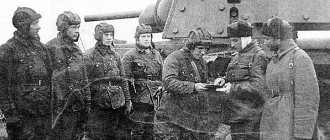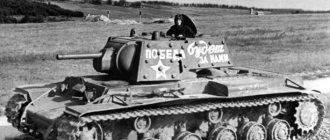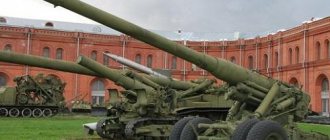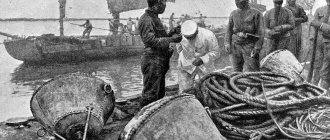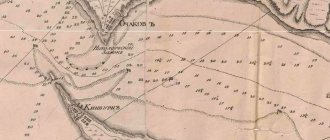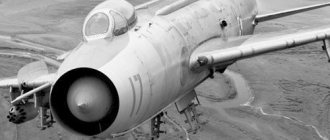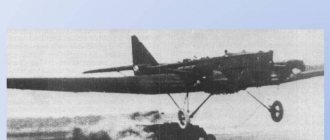Azov fortress in the 17th century
Azov occupied an advantageous geographical position at the mouth of the Don. In different eras the city was Greek, Russian (Tmutarakan Principality), Golden Horde, Genoese. Since 1471, the fortress belonged to Turkey. Azov was an important exit point from the Don to the Black Sea, so many conflicts of those years developed around the fortress.
By 1637, the citadel of the fortress consisted of three lines of stone walls (up to 6 m thick), 11 towers and a moat paved with stone (depth - 4 meters, width - 8 meters). Directly at the mouth of the Don, “special” watchtowers were erected on both banks of the river. Chains were stretched between them, which the ships could not overcome. The exit to the sea was covered with cannons from these towers. In the fortress itself by 1637 there were more than two hundred guns. The permanent garrison of Azov consisted of 4 thousand soldiers.
Azov was one of the major centers of the slave trade. Thousands of prisoners captured by the Turks and Tatars in Russian lands were constantly brought here. From here they were sent into slavery in the Ottoman Empire; here they were sold to Arab and Persian merchants.
Capture of the fortress by the Cossacks
The Cossacks attacked Azov more than once, devastating its outskirts, but they could not take the fortress itself. In 1625 and 1634 they managed to break into the fortress walls; in the first case, the Cossacks blew up a tower at the mouth of the Don, and in the second, one of the fortress towers.
At the end of April 1637, 4.5 thousand Cossacks, among whom about a thousand were Cossacks, the rest were Donets, took the fortress under siege. The Tsar and the boyars, having received news of this, sent help at the end of May: a caravan of plows with gunpowder, cannonballs and supplies. There were few guns, they were low-powered and could only damage the walls, but not destroy them. Therefore, undermining, followed by undermining of the walls, played a decisive role. On June 20, the Cossacks took Azov, freeing 2 thousand Russian slaves. After this, the Azov Cossacks began their imprisonment for 5 years.
Start of attack
How did the Seat of Azov begin (1637-1642)? You can learn briefly about this from the lips of the chieftain himself.
He called on his brothers in arms to go against the Busurmans not at night, stealthily, but during the day, with their heads held high.
And so it happened. On April 21, the Cossack army approached the walls of Azak from two sides - some of the soldiers sailed along the Don on ships, and some walked along the shore with cavalry.
The Turks were already waiting for the attackers. They were informed about the Cossacks' preparations by the Turkish ambassador Thomas Cantacuzene.
Therefore, the first attempts to capture the fortress were unsuccessful.
In addition, the structure itself was skillfully strengthened and equipped. The garrison was defended by a force of four thousand infantry and several galleys equipped with many cannons and other weapons.
The siege of Azov and the beginning of the “sitting”
In the summer of 1638, the Crimean Khan, by order of the Turkish Sultan, led an army to Azov and put it under siege. By this time, the Cossacks had restored the damaged fortifications and accumulated provisions and ammunition inside the fortress. By the end of October, having suffered a number of defeats in hand-to-hand combat, and having not decided on a general assault, the khan left. His attempt to bribe the Cossacks also failed.
Moscow did not respond to the Cossacks’ requests to take Azov into the Russian kingdom and send troops to defend the city. In response to the claims of the Turkish Sultan, expressed through the ambassador, the Cossacks were called “thieves for whom we do not stand in any way”; the Sultan has every right to punish. Nevertheless, the Tsar and the Zemsky Sobor sent a large shipment of gunpowder and lead to the Don. The Russian kingdom did not dare to enter into an open war with the Ottoman Empire: the war was fought on the western borders, and the state had not yet recovered from the Time of Troubles.
In June 1641, hordes of Turks, as well as Crimean Tatars, Circassians, Nogais, Kurds and other vassals of the Sultan surrounded Azov. The total number of troops ranged, according to various sources, from 120 to 240 thousand people. Azov was defended by up to 9 thousand Cossacks, led by Ataman Osip Petrov.
LiveInternetLiveInternet
“Azov seat” of the CossacksOn April 21 (May 1), 1637, detachments of Don and Zaporozhye Cossacks led by Ataman Mikhail Ivanovich Tatarinov blocked the Turkish fortress of Azov (a garrison of up to 4 thousand people with 200 guns) and after a two-month siege, on June 18 (28) they stormed the enemy fortress. After that they held the fortress until 1642.
Background to the siege
Azov, or in ancient times Tanais, was built during the times of the Scythians and Sarmatians. It was a major center of trade with Greece and Asia Minor; located on the shores of the Azov Sea. Azov is located on the left bank of the river. Don, 8 versts from its confluence with the sea. One half of the city is located below the Don itself, and the other is at altitude. The city had a closed fortress wall with a total contour of 600 fathoms. On the Don side the wall reached 10 fathoms in height. The fortress moats were 4 fathoms wide. The defensive force consisted of 11 towers. The walls were made of stone and cemented with clay; they had no teeth. The garrison of the fortress consisted of 4,000 selected Janissaries and up to 1,500 various people, for a total of about 5 and a half thousand people. It was armed with 200 guns of various calibers. Azov, which had turned into a Turkish fortress, blocked the Cossacks’ entrance to the Sea of Azov. The fortress became an outpost of the Ottoman Empire and a constant source of military threat to Rus'.
The Crimean khans, being vassals of the Turkish sultans, considered themselves at the same time the heirs of the Golden Horde and laid claim to receiving permanent tribute from the Russians. Tatar attacks bled the Russian state dry. During the first half of the 17th century. The Tatars captured about 200 thousand Russian people for sale in slave markets. In Azov, captives were sold into slavery to eastern merchants.
In addition, the fortress actually blocked the Don Cossacks from accessing the Sea of Azov, and then the Black Sea for raids on the shores of the Crimean Khanate and Turkey.
The Cossacks often attacked Azov and its suburbs, devastated them and, if successful, took tribute in money, salt, and fishing gear. Turkish troops from Azov, in turn, ravaged the Cossack villages.
The Turks now vigilantly guarded the waterway along the Don. In order to control the river, a triple iron chain with signal bells was stretched across the river, this chain was secured to the coastal stone towers with guns, thus the Turks completely controlled access to the sea and could drown the intruders with cross-shot fire. In addition, the barrier was insured by the fact that galleys armed with cannons were always on duty at the fortress. True, the Cossacks were no strangers and sometimes managed to break through the barrier in thick fog or under the cover of a stormy night. The Turkish guards were tormented by sending logs adrift, which hit the chains, the Turks opened fire, and when the vigilance of the guards was dulled, the Cossack detachments slipped under the chains in one throw.
But the fortress, although it did not completely stop the attacks of the Cossacks, was still able to block their large detachments. As a result, in the winter of 1636, the Cossack circle made the decision: “Go to Azov and commit a trade against it!” The messengers walked through the Cossack settlements, delivering the message: “Prepare for war!” For the campaign against Azov, 4.5 thousand Donets and 1 thousand Cossacks were collected.
Capture of Azov
For the success of the operation, the plan of the Azov campaign was kept secret. Mikhail Ivanovich Tatarinov was elected marching ataman. But at the same time, the Turkish ambassador, the Greek Thomas Kantakouzen, was passing through the Don to Moscow. The preparations of the Cossacks did not pass by his trained eye, the Azov Pasha was warned about the threat of attack. On April 19, an army of 4,000 people moved towards Azov. Some moved in boats along the Don, others, on horses, along the shore. For reconnaissance and support from the steppe, cavalry was sent, occupying the course of the Kagalnik River, forming a barrier towards Temryuk and Taman. Another part of the reconnaissance cavalry crossed the right bank of the Don and formed a barrier against the former Nogai and Crimea. In addition, a strong party of Cossacks on plows went to the mouth of the Don for protection from the sea.
When the Cossack army set out on a campaign on April 21, 1637, the Turks were already waiting for them: on the high walls of the fortress, teams of gunners with lit wicks stood at the prepared cannons.
The Cossack cavalry, deployed towards the Crimea, met the Tatar detachment returning after a raid on the Russian outskirts, defeated it completely and freed 300 Russian prisoners. But Tatar cavalry appeared everywhere in the steppe, and a shootout broke out in the field. While the Cossacks were digging approches, the Janissaries from the walls mocked them and shouted to them: “No matter how much you stand near Azov, you won’t be able to see him like your own ears.”
“The capture of the Turkish fortress of Azov by the Don Cossacks,” Nikolai Kochergin. Source: urun.gittigidiyor.com
The siege of the fortress began on April 21, 1637. erecting fortifications around Azov: digging ditches, building embankments almost close to the Azov stone walls, so that it was possible to throw stones at those besieged.
Long days of siege dragged on with skirmishes, attempts by the Donets to destroy the walls with cannon fire, and repelling the attacks of the besieged.
On May 22, the “sovereign’s salary” (gunpowder, 50 cannonballs for 84 cannonballs, cloth, 2 thousand rubles) arrived from Voronezh with a caravan of ships of 49 plows.
The siege continued. The cannon fire managed to damage the fortifications, but still the destruction was not so great that an assault could be launched. They made a tunnel and dug for about a month. Early in the morning of June 18, a powerful explosion created a hole in the wall 10 fathoms (more than 20 meters). Through this passage the Don people broke into the fortress. A bloody hand-to-hand battle broke out on the streets of Azov, lasting three days. It was especially difficult to storm the four towers, where 30-50 people were holed up in each. Azov soldiers fought in one of the towers for two weeks.
During the capture of Azov, the Don people gave freedom to two thousand Orthodox Christians. To their 94 cannons, the Cossacks added 200 large, medium and small cannons captured in Azov
By the summer of 1638, the Cossacks had restored the previous fortifications. Cannons were placed on the towers and walls. We accumulated a year's supply of food. To protect Azov from the steppes, a mounted guard of about 400 people was created. These horsemen constantly went on trips of 10 - 20 miles. The losses suffered by the Cossacks were replenished thanks to the arrival of Russian people, as well as Zaporozhye Cossacks. Azov quickly turned into a large trading city, to which Russian, Turkish and Iranian merchants came with goods. Fearing infiltrators disguised as traders, the Cossacks banned trade inside the Azov fortress. At the beginning of 1641, about a thousand Cossacks lived in Azov. 1200 heads of bulls, cows and horses were brought to the fortress for food. By the day the enemy appeared in Azov, over 5 thousand Cossacks and 800 women had gathered. Women, along with men, took an active part in the defense of the fortress. Thus, the strength of the Turkish army alone (without the Crimeans) exceeded the Azov garrison by 6-8 times. The Cossacks elected Osip Petrov and Naum Vasilyev as atamans.
Preparing the defense It is clear that the Turks could not let this happen - the Ottoman Empire was then a powerful empire at the height of its power. True, at that time the Ottoman Empire, due to the war with Iran (Iran-Turkish War of 1623-1639), could not send an army to retake the fortress. After the Turks captured Baghdad, the main Persian fortress in Mesopotamia, in December 1638, it became clear that a retaliatory military raid by the Turkish Empire against the Cossack Azov was already close. The Turks, shackled by the war with Persia, could still turn a blind eye to the strengthening of Cossack influence in the Northern Black Sea region. In the new conditions of a victorious peace with the Persian power, the expeditionary mission of the Turkish army to return Azov no longer had an alternative. Therefore, they sent their vassals - the Crimeans; already in January 1638, the Crimean Khan appeared under the fortress walls of Azov with 14 thousand horsemen, but having achieved nothing, he was forced to retreat. Then he wanted to resolve the issue peacefully - to buy the Cossacks, offering them a compensation of 40 thousand chervonets for leaving Azov. The Cossacks refused. Realizing that a decisive battle was inevitable, the Cossacks began comprehensive preparations for it, diplomatic and military: ambassadors were sent to Moscow, they asked the sovereign of All Rus', Mikhail Fedorovich (reigned 1613-1645), to take free Azov under his hand. The Tsar acted cunningly, realizing that there was no strength to openly fight the mighty Ottoman Empire - Rus' was devastated by the long Time of Troubles and had not yet fully recovered, in addition, a difficult situation was developing on the borders with the Polish-Lithuanian Commonwealth, he said that he did not order to storm the fortress, and reproached the Cossacks for their self-will, but at the same time Mikhail still did not deprive the Don Cossacks of their usual favors. And he told the Turkish ambassador that “the Cossacks are free people,” they fight at their own peril and risk, and if the Turkish Sultan wants, he can calm them down himself. Serious military preparations were underway, military ataman Osip Petrov, who was the son of a Cossack of the Kaluga regiment, survived the Russian Troubles as a child, saw ataman Bolotnikov himself, knew the techniques of his 3-month defense of Kaluga and the defeat of the large army of the Moscow Tsar. It was Osip Petrov who developed the Azov defense system, entrusting its technical implementation to the “profitable Cossack” and Magyar mine specialist Yugan Asadov, who had already distinguished himself during the capture of Azov by the Cossacks. The Cossacks raised ramparts and walls, installed 250 cannons on them, dug special underground structures - mine passages and “rumors”, they were designed to detect enemy tunnels, they made tours and log houses to cover future holes in the walls of the fortress, and stocked up on food and ammunition. At first the permanent garrison was small - only 1,400 soldiers, but upon learning that the Turks were coming, additional forces were drawn to the fortress. In total, in the garrison, according to various estimates, there were from 5.5 thousand to 8 thousand Cossacks, including the Cossacks, and there were 800 women in the garrison. This was approximately a quarter of the forces of the entire Don Army, the remaining forces - approximately 15 thousand fighters - settled in the lower settlements along the Don in order to prevent Turkish forces from going up the river, to attack its rear, and to replenish the garrison as necessary. In January 1640, the Persian Shah Sefi (Persia was a state hostile to the Ottomans) sent his ambassador Maratkan Mamedov to Azov, offering allied assistance for the war with the Turks - 20 thousand soldiers. But the Cossacks refused.
Early in the morning of June 24, 1641, approaching from three sides, the Turkish army took the Azov fortress in a tight ring. The Cossacks pointed out that the Turkish troops began to form completely openly about seven hundred meters from the city. Twelve Janissary commanders deployed their regiments in eight ranks, which stretched from the Don to the Azov estuary and stood so tightly that the soldiers rested their elbows on each other. The Janissaries were dressed in fiery red uniforms; on their shakos, polished copper cones shone brightly with golden reflections. According to modern researchers, on the night of June 24-25, the Cossacks, with a double blow - from the side of the fortress and from the side of the Don - unblocked Azov and a large detachment of Cossacks who came to the aid was able to break into the city. Even bleeding in the unequal struggle with the Polish-Lithuanian Commonwealth, the Zaporozhye Sich managed to find reserve forces and sent two detachments to help Azov. The first, numbering (according to various estimates) from two to ten thousand sabers, managed to safely break into the city. The second detachment of Cossacks, numbering about four thousand people, hastening on “gulls” with full sails and oars to Azov, and therefore, probably, did not send reconnaissance ahead, was ambushed. The Cossacks' boats were shot at direct fire from cannons. The few Cossacks who swam ashore were taken prisoner by the Janissaries. Already the very first assault on the Azov citadel on June 30, 1641, it seemed, could have been crowned with a complete victory for the Turks. The bombardment of the fortress, which lasted for seven hours, gave excellent results. “The gates and walls of the fortress,” writes Celebi, “were smashed and destroyed, and the houses in it were smashed to pieces. But the towers and fortifications built by the Genoese survived, as they were strong and solid. In the same places that were destroyed by the shots of our cannons, the infidels went to the next world to burn with hellish fire.” After artillery preparation, the assault began with all the forces of the Janissary regiments and a special detachment of six thousand European mercenaries. Under the walls of the fortress, the Janissaries found themselves in a system of “wolf pits” previously dug by the Cossacks with sharpened stakes installed at their bottom. This Cossack “surprise” did not, however, delay the Turkish guard, and with a powerful, coordinated blow, the Janissaries captured “Toprakov-gorod,” a strategically key fortress suburb of Azov. The capture of Toprakov seemed so certain to the Turkish military leaders that they ordered eight banners to be brought into the suburbs, one of which was the personal standard of Hussein Pasha. The banners were brought in and they were already rejoicing about the indisputable victory. And at that time, the central part of the Toprakov-Gorod square exploded! It literally exploded. Subsequently, the Cossacks explained their idea like this: “...We brought a large charge of gunpowder to the mine site and it was filled with cut shot.” A terrible powerful landmine, stuffed with chopped iron rods, literally smashed into pieces all the leading, most determined Janissary battalions. At least three thousand soldiers died instantly. Panic ensued. At this key moment, the Cossacks unitedly rushed into a decisive counterattack. The mutual bitterness was indescribable. Later, the Cossacks admitted that “besides the big attack of the first, such a cruel and courageous attack never happened to us: we cut ourselves with knives, face to face, during that attack.” In their assessment, the Cossacks did not exaggerate the bloody fury of the battle, for they were exactly echoed by the Turk Chelebi - “the eye of fate has probably never seen a battle like this.” By the evening of June 30, the “eye of fate” finally saw the unconditional triumph of the Cossacks: the Turks were driven out of the “Toprakov-city” and retreated to their camps. Turkish Janissaries and “German” mercenaries killed (according to various estimates) from four to six thousand people. Six senior Turkish officers and "two German colonels with all their soldiers" were also killed. The next day, Hussein Pasha, through a sent parliamentarian, proposed a truce to the Cossacks for the period of burial of the corpses. For the return of the bodies of the officers killed in the fortress, the Cossacks were offered a ransom: a gold piece of gold for each killed Janissary commander and one hundred European thalers for each colonel. The Cossacks did not take the “corpse gold”, proudly declaring to the Turkish interpreter: “We never sell dead corpses, but our eternal glory is dear to us.” The Cossacks gave up all the killed Turkish officers. 28 barrels of gunpowder and one and a half thousand dead After the first assault, Hussein Pasha realized that for “living well” the Cossacks could not be driven out of Azov. The order was given to proceed to a methodical bombardment of the fortress using all siege weapons. At the same time, at a key position, parallel to the fortress wall, they began to pour a special shaft, which was supposed to rise to a height above the destroyed fortress walls. On the upper platform of this rampart the Turks hoped to install cannons and shoot at direct fire the interior of the Cossack citadel. It was with this simple but very effective method that the Turks captured the seemingly impregnable Persian Baghdad in 1638.
The Cossacks, seeing the Turkish initiative, did not interfere. For their part, they pulled their underground explosive passage (sap) towards the shaft. After some time, the glanders came out under the rampart under construction, and the Cossacks began to wait for the “official opening ceremony” of the new structure. Probably on July 7, 1641 (the exact date is unknown), the Turkish assault rampart reached its target point. The Turks raised their standard on it and began dragging cannons and barrels of gunpowder onto the upper platform. At this moment, the Cossacks realized that the time had come for “the chosen of God,” i.e. some of them will have to die “untimely” today. “And then, having made a gravestone last farewell to each other,” the Cossacks later wrote, “with our small squad of seven thousand of ours, we went out of the city into direct battle against their three hundred thousand.” With a furious wolf howl, a wave of thousands of Cossacks literally flooded the constructed rampart in one splash. The Turkish soldiers and laborers, carrying barrels of gunpowder, mostly disarmed, did not expect this onslaught, and therefore ran without looking back. The Cossacks captured sixteen Janissary banners and twenty-eight barrels of gunpowder at the top of the rampart. Under the cover of indiscriminate shooting and short demonstration attacks, the Cossacks lowered all 28 barrels of “powder potion” into their open explosive glanders. This took, of course, some time, during which the Turks managed to mobilize. Under pressure from the Janissaries, the Cossacks, as if reluctantly, began to be drawn back into the fortress. The Janissaries, inspired by success, pressed more and more furiously, the Cossacks more and more quickly squeezed into Azov - further and further from the assault rampart filled with gunpowder. Finally, the ranks of the Janissaries flooded the base of the assault rampart. One more effort - and now the young Janissary Aga, hugging his comrades, joyfully shouts from the upper platform “Allah Akbar!” and earnestly draws a bloody scimitar over his head. It was at this moment that the fiery mouth of the Cossack Inferno opened wide in the center of the rampart - a gunpowder mine hidden in twenty-eight barrels opened it! According to contemporaries, this explosion was heard forty miles away. The large headquarters tent of Hussein Pasha was torn from its supports by the blast wave. Inside Azov itself, behind the fortress walls, the Cossacks counted 1,500 corpses of the Janissaries, broken and thrown into the fortress by the monstrous force of the explosion. “Many thousands of them were killed by it (the blast wave),” the Cossacks wrote in their “Tale,” “and our Janits threw one thousand five hundred people into the city with our tunnel!” One can doubt the number of dead bodies of Turkish heroes thrown over the fortress wall. But even if there were only 150 of these bodies - ten times less than the Cossacks imagined - the force of the explosion was still colossal, and the result of this daring military action was exceptional!
In 1642, the Don people, seeing the difficulty of holding Azov with their own forces, left this fortress themselves, having previously destroyed all the fortifications, and it again passed into the power of the vizier Kara-Mustafa.
Monument to the Cossacks who died in Azov
Stages of the siege
The main stages of the battle, which lasted from the end of June to the end of September 1641, were:
- A series of attacks after many hours of artillery shelling (June - first half of July)
- "Land War" (July–August)
- Assault in “continuous waves” (September)
As a result, the fortress suffered serious damage. The Cossacks left the city, thereby ending the “sitting”.
Losing the first lines of defense
Already at the first stage, the fortress and internal buildings were severely destroyed. Of the 11 towers, only three survived. During the assault, Turkish troops suffered terrible losses. The Cossacks were driven out of the outer lines of defense: Toprakov city (Toprak-kala) and Tashkalova city (Tash-kala) behind the last, strongest wall of the Genoese construction.
Earth War
At the stage of the “earth war”, at least 17 large mines were built under the walls of the fortress. But the Cossacks were more successful in this art: they made countermines and carried out sabotage right in the enemy camp. Thus, a grandiose explosion of a landmine planted underground, “filled with chopped shot,” destroyed up to 3 thousand Turkish soldiers, from among the selected Janissaries, in the Toprakov town.
The detonation of the earthen rampart became even more powerful. It was poured by the Turks to shell the inside of the citadel, above its walls. This explosion was heard 40 miles away, and the blast wave, sweeping away everything in its path, even reached the commander’s tent and swept it away. During the “earth war”, 3 more similar explosions, less powerful, were carried out.
Another successful sabotage was the capture by the Cossacks of Turkish ships with gunpowder stationed at the mouth of the Don. At night, the Cossacks got out of the fortress through underground passages, swam up to the ships, broke into them and burned them along with the ammunition.
Continuous assault
In September, the Turks switched to tactics of continuous attacks, day and night. The calculation was for colossal numerical superiority and exhaustion of the forces of the Azov defenders. Fresh units were constantly rushing into the assault, while others were resting and preparing for the attack. The Cossacks, of whom only 1-2 thousand remained alive, were forced to fight constantly. But all 24 assaults were repulsed.
On September 26, the siege was lifted and the Turkish army retreated. This decision was due to huge losses, the danger of a riot in the army, and difficulties in supplying such a large army.
Start of operation
Who made the decision to capture Azov? In the winter of 1636, the general military council of the Cossacks decided that it was necessary to undertake a campaign against the enemy Azak in order to take possession of the fortress and all the privileges associated with its possession.
Messengers from the Cossack Circle went through all the villages to gather everyone who wanted to go on a warlike foray. Four and a half thousand Don Cossacks and one thousand Zaporozhye were ready for battle.
The military council, meeting in the Monastic Town, set a specific day for the attack, determined the plan of operation and chose a marching leader. He turned out to be Mikhail Tatarinov - a brave and wise Cossack, who, most likely, came from the Tatars or was once in their captivity.
The end of the Azov sitting
Near Azov, Turkish troops lost, according to various sources, from 30 to 96 thousand people. The moral damage was also colossal: the army of the great Ottoman Empire was beaten by robbers and beggars, whom the Turks arrogantly considered the Cossacks to be.
At the end of October 1641, a delegation of Cossacks went to Moscow with a new request to accept Azov into the Muscovite kingdom and post a garrison there. A responding delegation of the sovereign's people, which visited Azov in December, reported to the sovereign that little was left of the fortress: it was, in fact, destroyed to the ground. In January 1642, the Zemsky Sobor decided not to enter into war with Turkey and return Azov to it. The Cossacks were advised to leave the fortress and “return to their kurens.” In the summer of 1642, having learned about the approach of the Turkish-Crimean army, the Cossacks left Azov, blowing up the remains of the fortifications and taking artillery with them. The Turks returned to the mouth of the Don and began to build a new fortress. The Azov siege of the Cossacks ended here. Azov will finally be taken in 1696 by the army of Peter 1, but in 1643 the city again returned to Turkish control.
Cossack Azak
Thanks to the capture of the fortress, the Cossacks freed about two thousand Slavs, captured the enemy's cannons and declared Azov a free city of Christians. The old temple of the fortress was re-consecrated, trade and political ties were established with Russian and Iranian merchants.
Who became the owner of Azak after the fall of the fortress, when the Azov Seat began (1637-1642)? The Russian sovereign himself briefly answered this question. He refused to accept the fortress as the property of Russia, fearing to violate peace agreements with the Turkish Sultan. Therefore, the Don-Zaporozhye Cossacks were considered the rightful owners of the city.
They traded briskly, rebuilt and strengthened the fortress, realizing that the revenge of its former owners would not be long in coming.
And so it happened. At the beginning of 1641, the literal Seat of Azov began (1637-1642).

